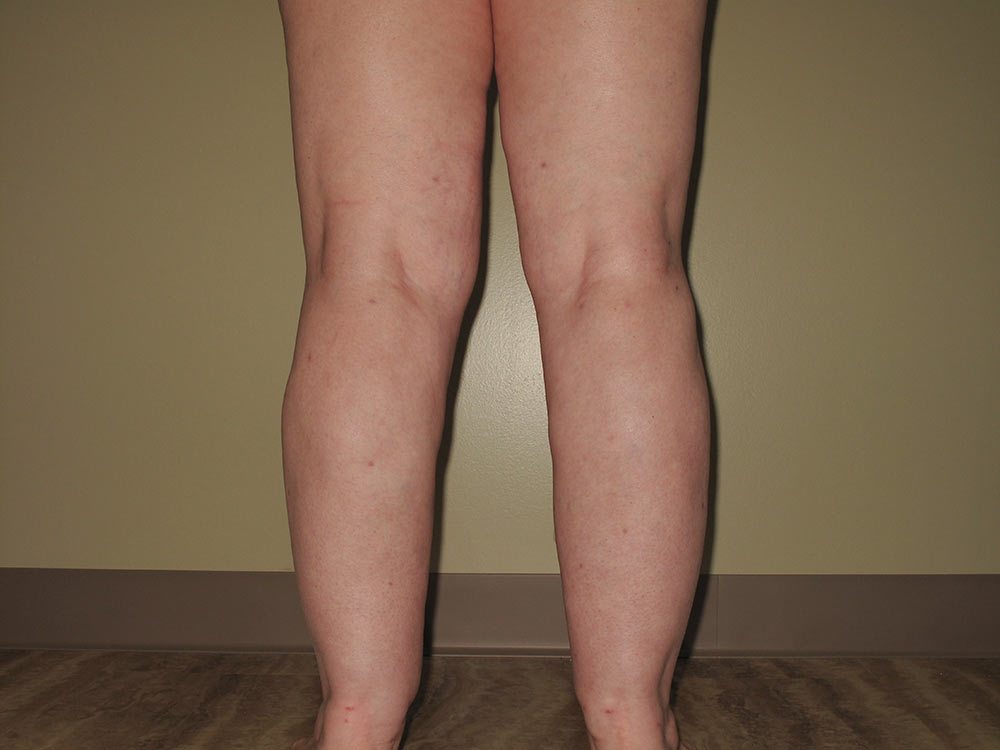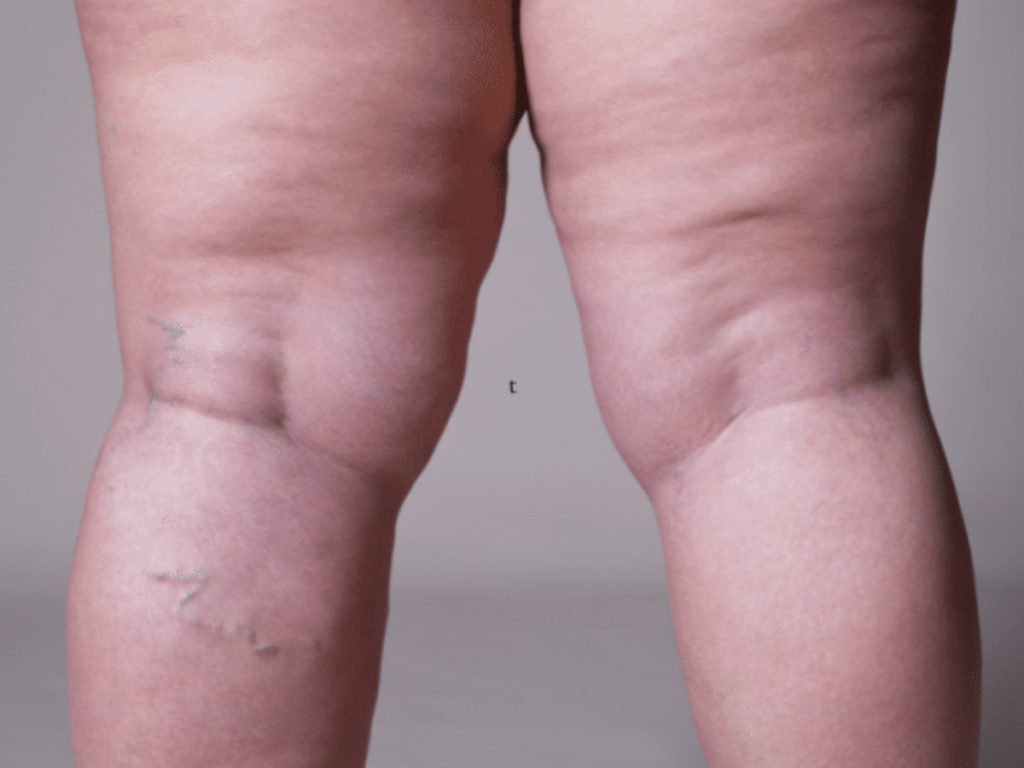Lipedema is generally described as a ‘symmetrical condition’ – meaning it usually affects both legs (or both arms) in a similar way. This is one of the key characteristics used to distinguish Lipedema from other conditions like Lymphedema or general weight gain.
So, when one leg starts to look or feel significantly different from the other, it raises a very valid question: Can Lipedema affect just one leg?
It’s Uncommon, But Not Impossible
While Lipedema typically presents itself symmetrically, there are cases where one leg appears more visibly affected than the other – especially in the early stages.
This doesn’t necessarily mean the Lipedema is only in one leg. Instead, it could be that:
- One leg is progressing faster than the other
- There’s a secondary condition affecting the other limb
- There’s underlying Lymphedema or trauma making one side worse
- Lipedema and varicose veins are both present in one leg more than the other
Why Lipedema Is Usually Symmetrical
Lipedema is thought to have hormonal and genetic origins, and it typically distributes bilaterally – meaning both sides of the body are affected in a mirrored way.
This is why symmetry is often listed as a diagnostic clue, along with:
- Fat that’s painful to touch
- Easy Lipedema bruising
- ‘Column-like’ legs that spare the feet
- Disproportionate lower body despite weight loss attempts
- A positive Lipedema pinch test result
But like with many medical conditions, not everyone fits the textbook description.

So, What If One Leg Is Bigger?
Here are a few possibilities if you’re noticing one leg is larger, more swollen, or more painful than the other:
1. Early-Stage Lipedema
One leg may appear more affected early on, especially if the other is still in a mild or undetectable stage.
2. Secondary Lymphedema (Lipo-Lymphedema)
If the lymphatic system is struggling on one side, you might develop swelling in addition to Lipedema fat and this can create a visibly larger leg on one side.
3. Previous Injury or Surgery
Trauma, surgery, or an injury could impact lymph flow in one leg more than the other, making Lipedema symptoms appear worse on that side.
4. It Might Not Be Lipedema
If your leg is swollen, heavy, or painful but not symmetrical, it’s worth ruling out:
- Lymphedema
- Chronic venous insufficiency
- DVT (deep vein thrombosis)
- Cellulitis or infection
Always speak to a medical professional if the swelling comes on suddenly or is accompanied by redness, heat or pain.
Getting a Proper Diagnosis
If you’re not sure what’s going on, or you suspect Lipedema but your symptoms don’t fully match, it’s time to speak to a specialist.
We recommend starting with a:
- Lymphedema nurse
- Vascular specialist
- Or a professional listed in our Find a Lipedema Specialist directory
Bring photos, your symptom history, and documentation – especially if your symptoms have changed or worsened over time.
The Difference in My Legs
I’ve had Lipedema for 17 years and I’ve always had one leg that was bigger than the other. Not so noticeable that people would stop and stare when I was walking down the street, but there has always been a difference.
I had Lipedema Reduction Surgery on my lower legs at the end of 2023 and I guess I presumed my legs would end up the same size after I’d fully recovered. I’m now 18 months post op and my legs are still different! It doesn’t necessarily bother me – I’m thrilled with my results but it’s still the case.
Part of the Lipedema liposuction pre-op protocol with my surgeon was to have a venous doppler exam to rule out the presence of any varicose veins. I had sclerotherapy on my right leg (the larger one) to improve the circulation through a varicose vein next to my knee. This leg has always had more thread veins and is a bit more troublesome – that probably explains why it remains a bit bigger than the other one!

Trust Your Instincts
Even if your symptoms don’t check every box on the Lipedema list, you know your body best. Many women spend years without a proper Lipedema diagnosis simply because their symptoms didn’t look textbook enough.
Asymmetry might not be ‘typical’, but it doesn’t mean your experience isn’t valid or worth investigating.
So, Can You Have Lipedema in One Leg?
Technically, Lipedema is a symmetrical condition, but real-life bodies aren’t always that straightforward. You may be in the early stages, dealing with multiple conditions, or just experiencing your own personal version of Lipedema.
If one leg looks or feels different, especially if you’re in pain, bruise easily, or struggling with swelling, don’t wait.
Get it checked. Get answers. Get support.
Do you have Lipedema and one leg that is larger than the other? Send me an email on
so****@li***********.com
and let me know.
Disclaimer: My blogs talk about Lipedema, diet, surgery and much more. I’m talking from my point of view to help women, and remind them they are not alone. I am not a medical professional, so the content above is from my own perspective with research I have done into the topic. It’s not meant as medical advice, you should always consult your doctor or a specialist for both your diagnosis, and a treatment plan.

